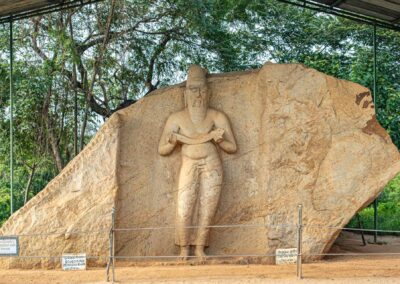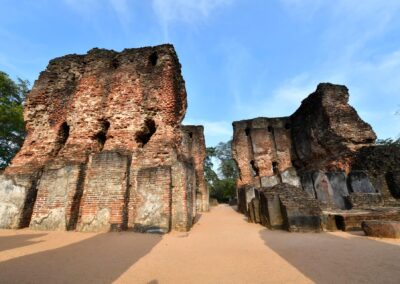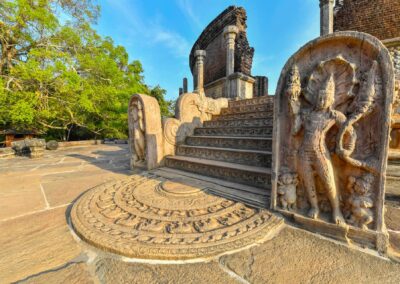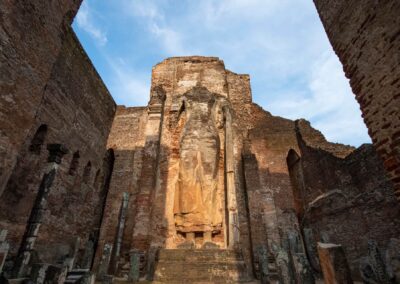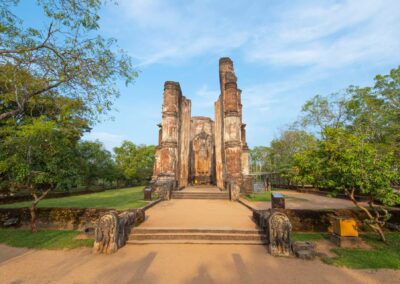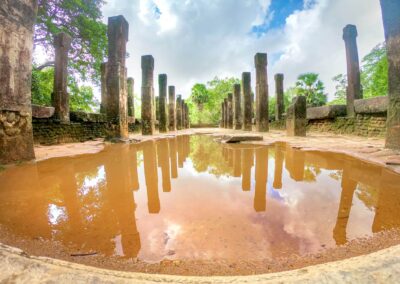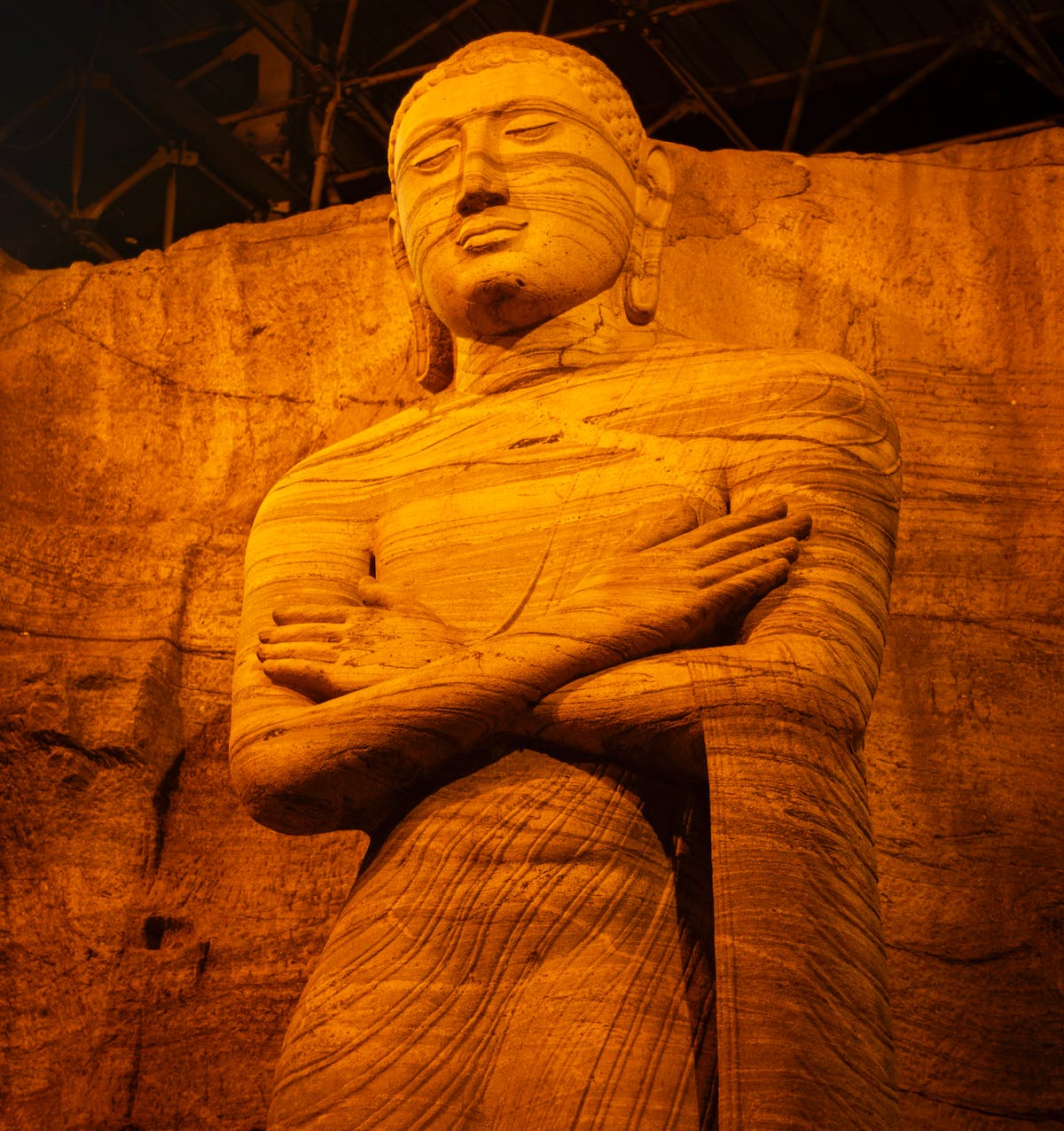
Polonnaruwa
It is where ancient Sri Lanka established its kingdom after the fall of Anuradhapura. The kingdom lasted from the 10th century to the 13th century. This archaeological city is a treasure trove of extraordinary stone monuments from its heyday. As it became the ruling kingdom of both Sinhala kings and Chola invaders, the city has a wealth of Brahmanic monuments. Polonnaruwa temple ruins, which are in hundreds, are scattered in and around the archaeological park. The area also features enormous reservoirs and water tanks built by the kings. It is one of the largest paddy cultivators in the country. Its UNESCO World Heritage Site status is a testimony to its rich and colourful history.
Hidden Gems
- Pothgula Vihare is a dagoba-like building thought to have been used to store sacred books.
- Royal Palace complex has the palace ruins of Parakramabahu I, including Audience Hall.
- Shiva Devalaya 2 is a 10th Century Hindu temple, the oldest, constructed by Cholas.
- Gal Potha is the longest stone inscription in Sri Lanka and resembles a palm manuscript.
- The Archaeological Museum showcases artifacts and replicas of original structures.
- King’s Council Chamber has each minister’s name inscribed on the stone pillars.
Best Times to Visit
Polonnaruwa is a year-round destination. October to December is the rainy season.
Weather
Top Attractions
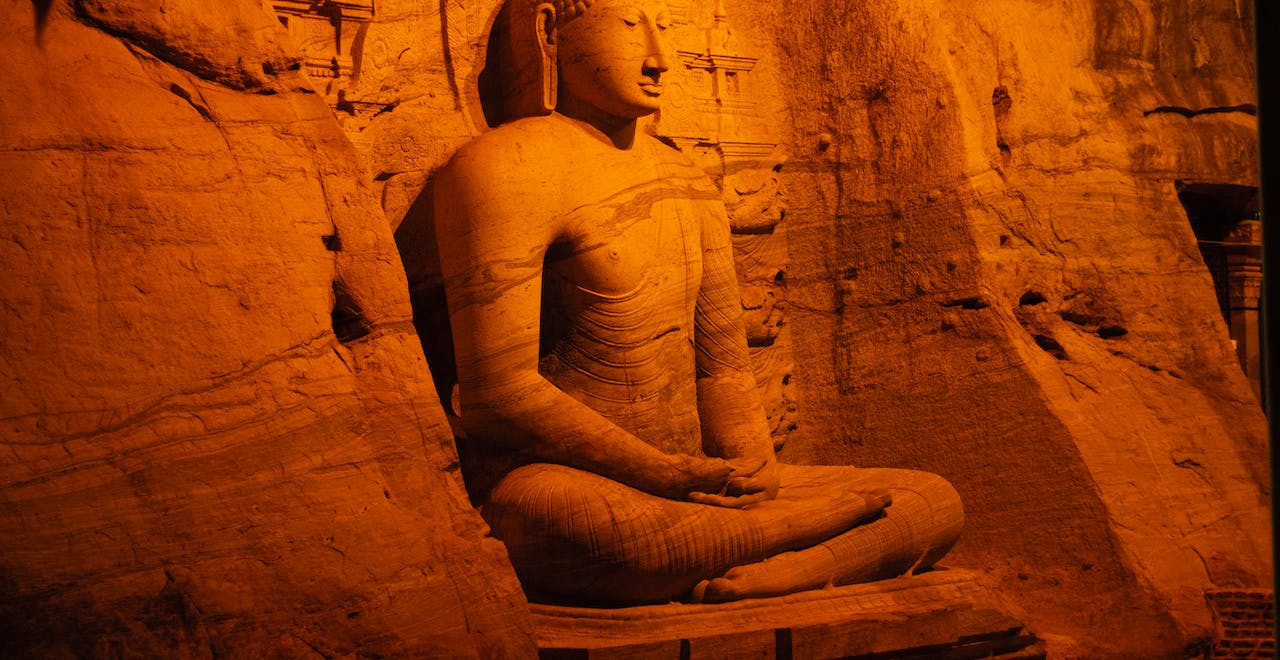
Gal Vihare
It is a 12th Century rock temple, built by King Parakramabahu I. Four rock relief Buddha statues carved into an enormous rock face are the main feature.
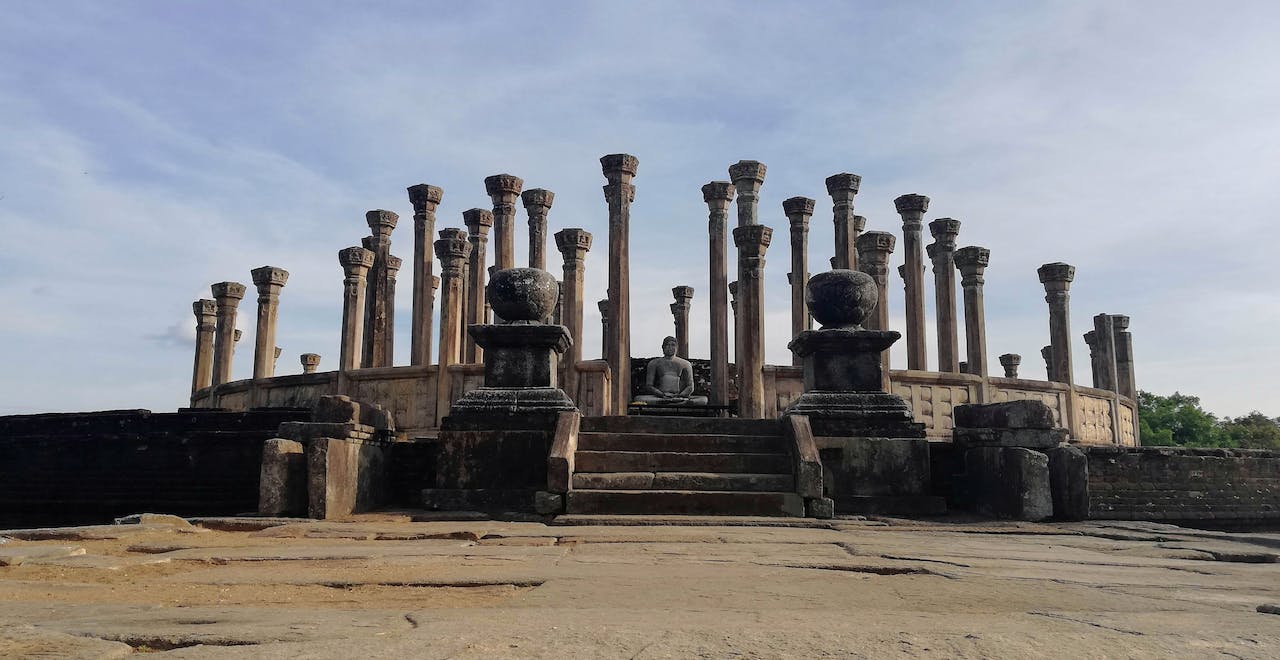
Vatadage
Known to be Sri Lanka’s best-preserved Vatadage, it is a circular relic house located in the Quadrangle, which has the most concentrated monuments.
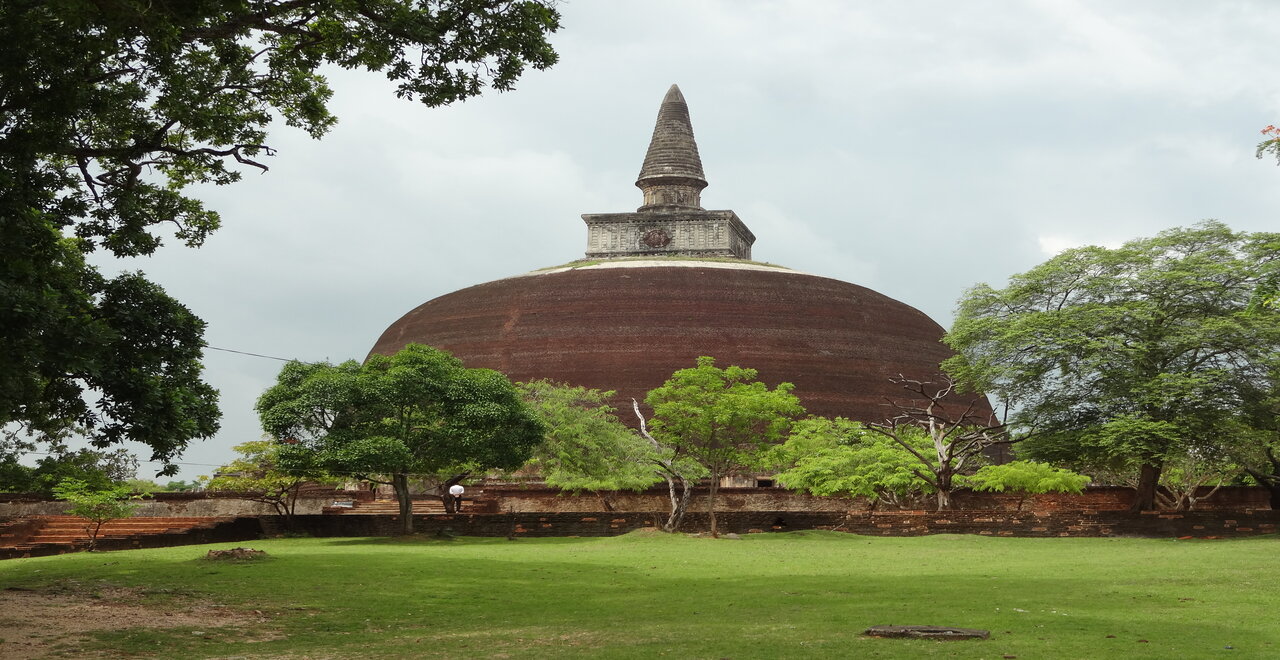
Rankoth Vehera
It is the largest Polonnaruwa stupa and the fourth largest on the island. Constructed by King Nissankamalla in the 12th Century, it’s 170m tall.
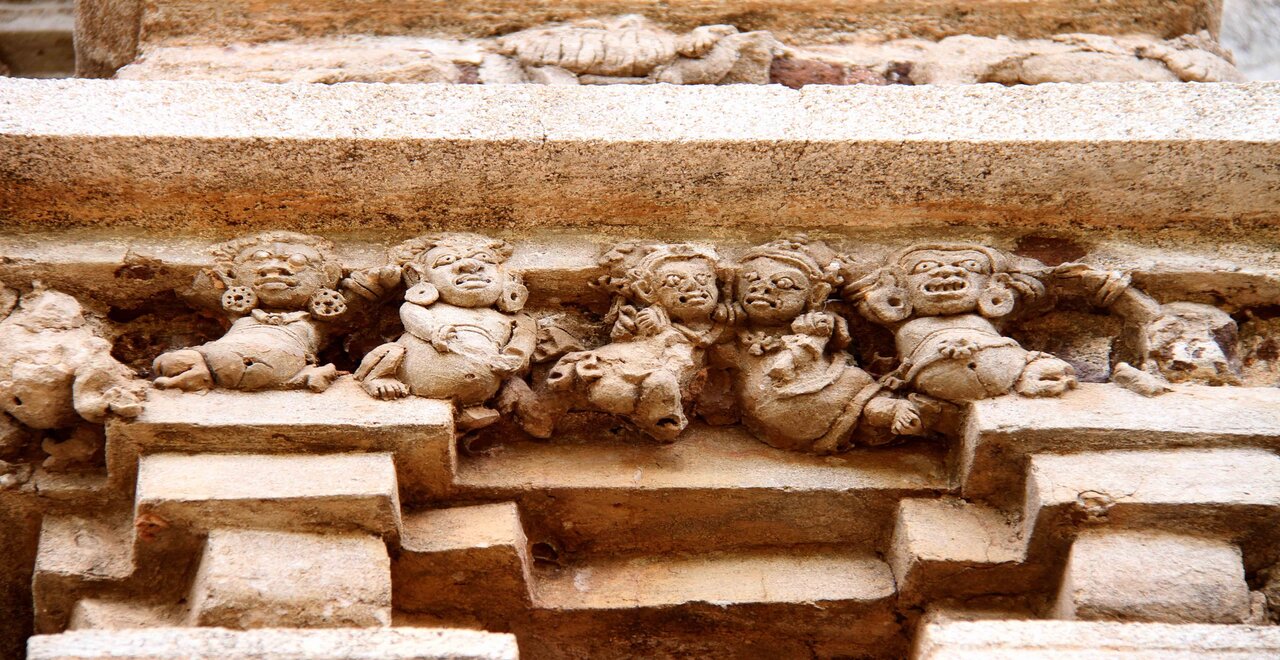
Thivanka Image House
Famous for its unique Buddha statue, it contains the only surviving Polonnaruwa murals. These are some of the best frescoes of Buddha’s past lives.
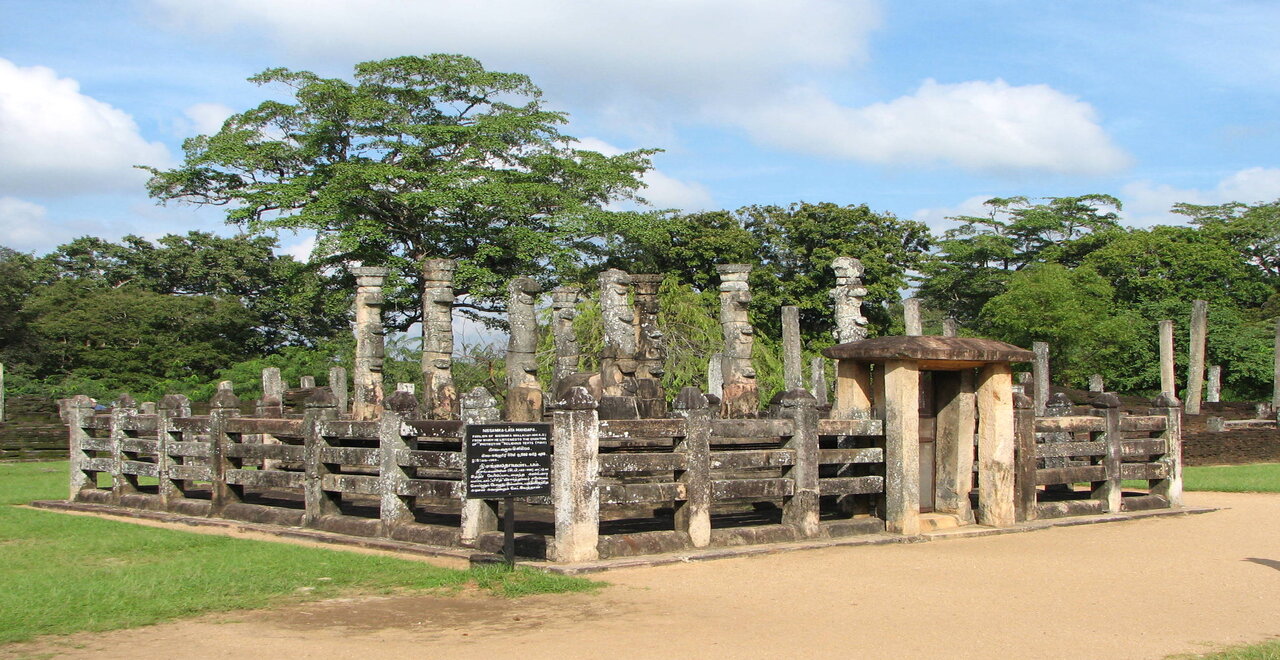
Nissanka Latha Mandapaya
The structure built by King Nissankamalla consists of a latticed stone fence surrounding a small dagoba. Lotus-shaped stone pillars circle the dagoba.
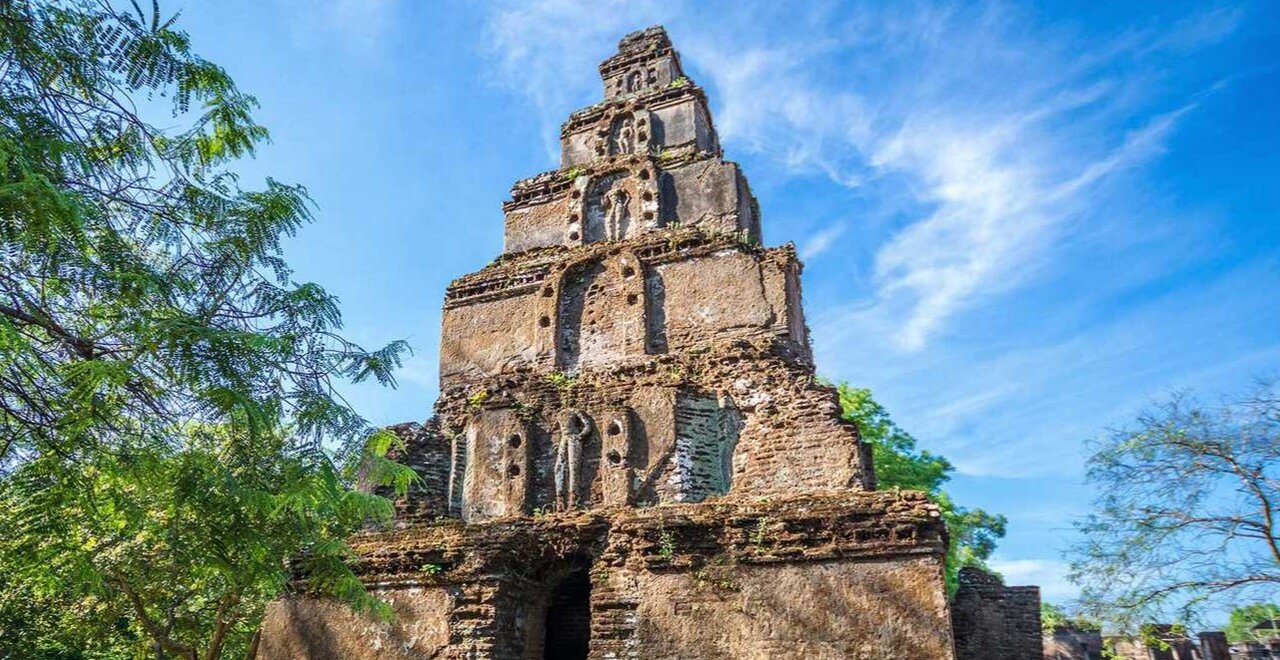
Sathmahal Prasada
It is one of the most distinctive places to visit in Polonnaruwa. This ziggurat-style structure has six diminishing storeys shaped like a stepped pyramid.
Where to Shop in Polonnaruwa
When it comes to shopping, choices are limited here. While the city can provide basic groceries and essentials, there are no fancy places to spend your cash.
Where to Eat in Polonnaruwa
Most Polonnaruwa restaurants serve local dishes. Jaga Food, Gami Gedara, Sudu Araliya, Thidas Arana, Wishma, Lake Restaurant, Govi Gedara, and Mahanuge serve a variety of traditional cuisine.
Top Accommodations
Explore where you enjoy a comfortable stay during your explorations.
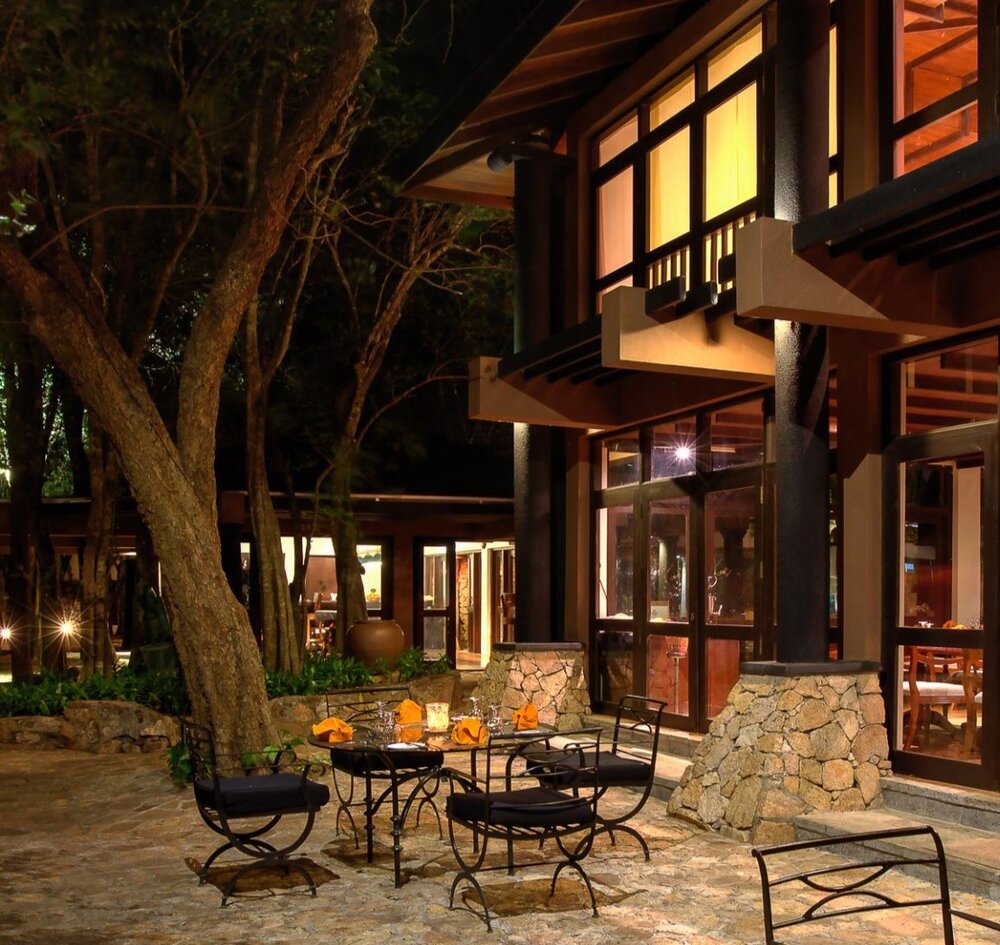
Deer Park Hotel
Refined cottages surrounded by jungle and lush vegetation have tile floors, satellite TV and sitting areas. Most have open-air bathrooms. Upgrades add private gazebos and pool, pond or forest views.
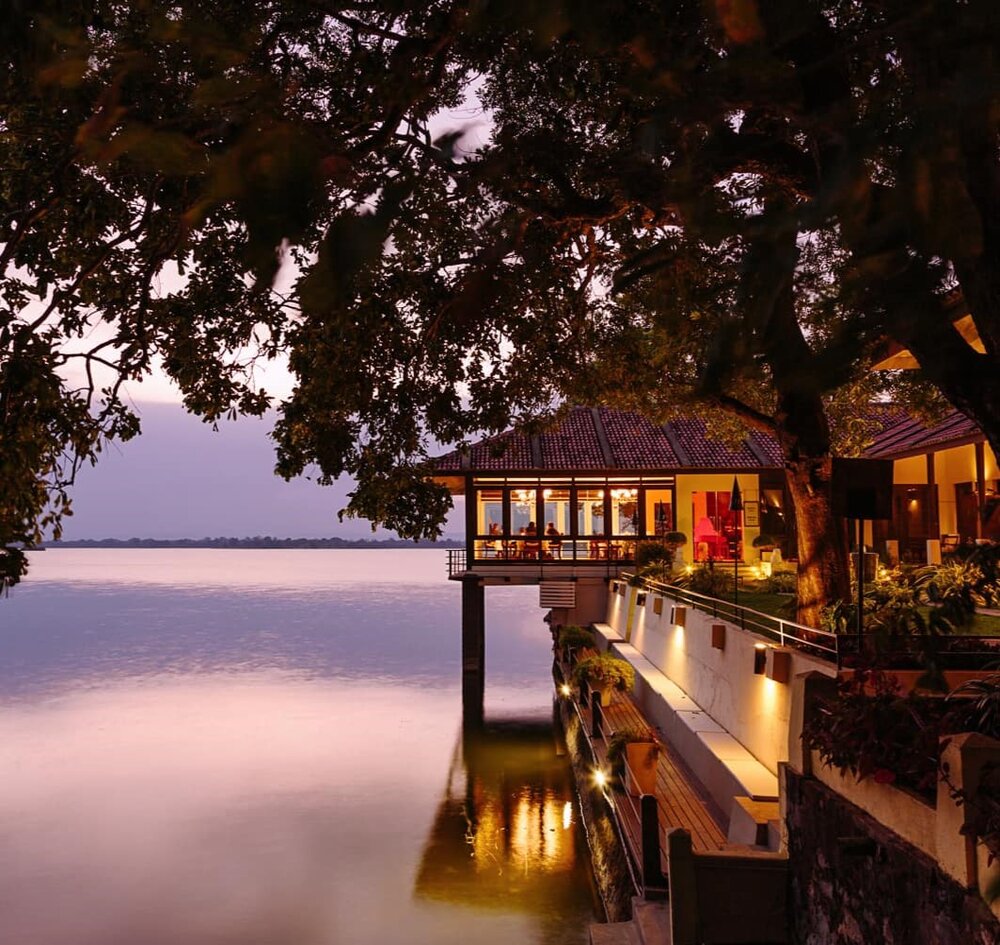
Ekho Lake House
Amenities include a restaurant and a bar with lakeside terraces. Breakfast is available for an extra charge.

